Ayurvedic Treatments
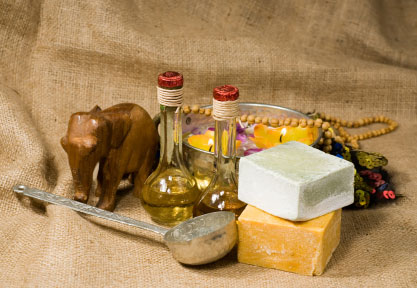 Ayurvedic treatment plans almost always includes changes in lifestyle and/or diet. There are more than 20 different treatment types recognized in Ayurveda, the most common of which are organized to represent the 5 senses.
Ayurvedic treatment plans almost always includes changes in lifestyle and/or diet. There are more than 20 different treatment types recognized in Ayurveda, the most common of which are organized to represent the 5 senses.
5 sense therapies are used when specific treatments are needed to stimulate one or more of the five senses:
- Taste (Nutrition, herbs)
- Touch (Massage)
- Smell (Aromatherapy)
- Sight (Chromatherapy/color therapy)
- Sound (Music therapy, mantras)
Let's take an in-depth look at each of these therapies:
Nutrition...
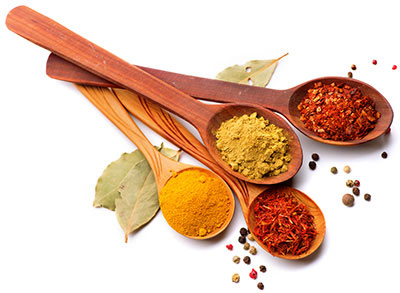 An Ayurvedic diet is the foundation of healing and vitality. Ayurveda recommends a nutrient-dense diet consisting of a balanced amount of proteins, fats, and carbohydrates. Fresh food which is organically grown with love and care is considered to possess a much higher amount of vital energy than food which is processed with chemicals, additives, pesticides, growth hormones, and other toxins (which I call the Dirty Dozen) which are now part of the modern industrialized food chain.
An Ayurvedic diet is the foundation of healing and vitality. Ayurveda recommends a nutrient-dense diet consisting of a balanced amount of proteins, fats, and carbohydrates. Fresh food which is organically grown with love and care is considered to possess a much higher amount of vital energy than food which is processed with chemicals, additives, pesticides, growth hormones, and other toxins (which I call the Dirty Dozen) which are now part of the modern industrialized food chain.
The Dirty Dozen & why you should avoid them...
Ayurvedic nutrition is mindful that whatever energy is absorbed by the food during its creation will be passed onto the person who consumes it. For this reason, commercial products such as milk, eggs, and meat are avoided unless there is an assurance that the animals were treated with kindness and respect during their life and during the collection of the product. Free range eggs (eggs laid by chickens which are raised on pastures in their natural environment), for example, are considered acceptable. Eggs from factory-farmed chickens are not. This concept also passes over to food preparation, where the food is prepared and cooked with emotions such as love and gratitude, which in turn fills the food with a significantly higher amount of vital energy.
This approach is in direct opposition to the cruel and inhumane treatment of animals on factory farms in the US, where 99% of the meat consumed by the US public is raised To ensure your meat is NOT factory-farmed, make sure it is pasture-raised (free range), and if possible, organic. Many health food stores and butchers offer these healthy meat choices.
- What is factory farming& why is it banned in other countries
- 7 reasons why factory-farmed meat is dangerous for your health
- Going organic - why you should ditch the pesticides!
Eat meat responsibly or choose vegetarian
Recommended Diet
An Ayurvedic diet is lighter than traditional western diets and causes less stress on the system:
- Vegetarianism (which excludes all meat, poultry, game, fish, shellfish/crustaceans, and slaughter by-products) is followed as closely as possible, with a diet consisting mainly of fruits, vegetables, nuts, grains, and legumes as the main staple.
- Refined foods and artificial sweeteners are avoided in favor of freshly prepared foods.
- Fresh, clean water is drank in plentiful amounts, as well as fresh fruit and vegetable juices. Coffee and alcohol are either avoided, or drank infrequently.
Ayurvedic cooking is considered an art in and of itself. The sense of taste is considered therapeutic. If the taste of food is not pleasing, then the digestion of the food is then affected.
Recommendations of types and amounts of food are individualized according to a person's doshas and the season. Each food contains specific energies which, in greater or lesser quantities, can either balance or cause imbalance to each dosha. This does not necessarily mean any foods are off-limits, simply that they may need to be reduced or eaten in moderation.
The 6 Tastes
Nutrition in Ayurveda is a balance of 6 different tastes found within foods. Each dosha has an affinity for these different tastes, and many foods contain a combination of them. Taking the appropriate amounts of each produces a balancing effect on a person's dosha(s).
- Sweet (composed of the elements earth and water)
Associated with contentment and pleasure, and found in most foods ranging from ripe fruits and vegetables to nuts and dairy products. Predominantly found in natural sugars and honey. Used to build and repair tissue. Balances vata and pitta. - Sour (composed of the elements earth and fire)
Examples include citrus fruits, ketchup, fermented foods (yogurt, sour cream), vinegar, picked vegetables, and tamarind. Sour foods are considered cleansing and heat-producing. Balances vata. - Salty (composed of the elements water and fire)
Found in sea vegetables, rock and table salt, seaweed, and in smaller amounts in many other foods. Balances vata. - Pungent (composed of the elements fire and air)
Examples include foods such as hot peppers, cloves, radish, mustard, and onions. Balances kapha. - Bitter (composed of the elements air and ether)
The bitter taste is due to the presence of alkaloids. Examples include leafy greens, bitter melon, basil, fenugreek, and turmeric. Balances kapha and pitta. - Astringent (composed of the elements air and earth)
The astringent taste is due to the presence of tannins (plant polyphenols) found in the seeds and skins of vegetables and plants, and which add color and provide an astringent (tart) taste. Astringent foods have a drying effect. Examples include pomegranates, pears, apples, sprouts, persimmons, cabbage, and parsley. Balances kapha and pitta.
Herbs and spices are also used in small to moderate amounts.
Music Therapy...
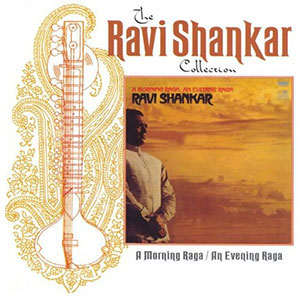 The Ayurvedic view of music therapy is that different vibrational frequencies are associated with the different times of the day and night, and with the seasons. Ragas (literally translated from Sanskrit to mean “musical color”) are pieces of music played at specific times of day (in 3 hour segments, totaling 8 segments in a 24 hour period) that amplify the universal frequency of a specific 3 hour period.
The Ayurvedic view of music therapy is that different vibrational frequencies are associated with the different times of the day and night, and with the seasons. Ragas (literally translated from Sanskrit to mean “musical color”) are pieces of music played at specific times of day (in 3 hour segments, totaling 8 segments in a 24 hour period) that amplify the universal frequency of a specific 3 hour period.
Ragas are also called “healing ragas” and can be purchased online or in alternative bookstores. They can also be purchased directly from The Chopra Center.
Each dosha reacts individually to the varying frequencies of the ragas, and recordings can be purchased that are composed specifically for each dosha.
There are literally thousands of different ragas, not all of which are listened to at specific times of the day or season. Many are listened to depending on the mood of the listener, or emotional experience desired.
Mantras...
Mantras are Sanskrit words which are considered powerful, and which can produce a sound and vibration that penetrates our body. Each mantra is associated with a seer (a person who has powers of foresight such as clairvoyance) or the person who originally created it. The most widely known and used mantra is the word “Ohm” which represents the essence of Oneness.
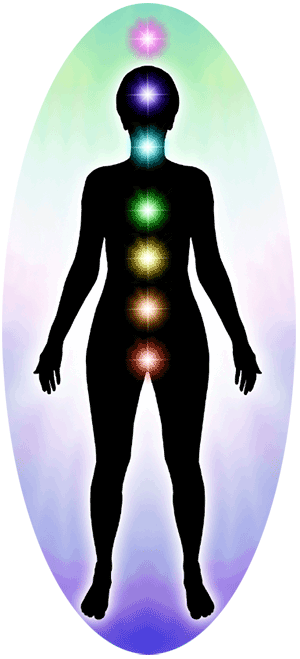
Everything in existence resonates to a specific vibrational frequency. The vibrations created by mantras have an impact on not only body, but our environment, and in turn, the entire universe. The Vedas (Hindu scriptures) documented in archaic Sanskrit that everything comes into being through the power of word. This concept is similar to the New Testament, St. John’s Gospel, which states “In the beginning was the Word.”
Although most mantras are easy to learn, certain mantras must be pronounced in a very exact manner, and therefore are learned under the supervision of qualified teachers, or through listening to CD's or DVD's for guidance on pronunciation. Mantras can be spoken, chanted, sung, written, or visualized.
How Mantras Work
Saying words produces a physical vibration, which creates a corresponding effect. Adding the power of intention and focused thought to specific words increases this effect.
In Ayurveda, specific mantras are recited depending on the doshas and any health issue being experienced. The mantra “tunes” the body by generating vibrations which stimulate vital energy flow in the 7 primary energy centers (chakras) and the energy channels of the body. The chakras are located along the length of the spinal column, each relating to biological systems within the body. With constant repetition, over time the vibration of the mantra will override other inharmonious vibrations and the body will begin entraining (come into tune with) to the higher vibration of the mantra.
High Vibrational Living
Learn all about energy & vibrational frequency
Each chakra is considered a lotus flower with a specific number of petals. Each petal represents an alphabet letter and a main “seed” letter which translates to a vibration. A specific mantra is recited which resonates with the vibration of the chakra being stimulated.
Mantras are not only used for physical conditions. They are also used for a wide variety of purposes ranging from awakening our sense of spirituality, to drawing material things to us, clearing obstacles, and relieving stress and anxiety.
Reciting various mantras also produces a cleansing and balancing effect on food preparation and on the water being drank. In India, mantras are recited during the preparation of snakebite antidotes to increase their potency.
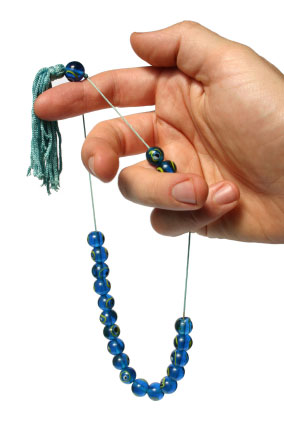
Mantra Beads
Mantra beads are sometimes used to help remain focused and to keep track of how many times a mantra has been repeated. A string of mantra beads can come in a variety of different shapes and colors, and traditionally contains 108 beads (some contain 54 beads, where the mantra is repeated 54 times and then repeated to total 108 repetitions).
The number 108 is considered sacred for several reasons, the main of which is because it reflects the number of marma points (vital energy points) on the physical body.
Color Therapy
 The light waves of different colors affect each dosha differently, sometimes intently and sometimes subtly. Depending on the dosha imbalance experienced by the individual, an Ayurvedic practitioner may recommend increasing full spectrum sunlight, or using specific colors. These colors can be provided by clothing, colored lights, chromatherapy baths (baths which integrate lights of various colors), the color of foods, and items in the general surroundings.
The light waves of different colors affect each dosha differently, sometimes intently and sometimes subtly. Depending on the dosha imbalance experienced by the individual, an Ayurvedic practitioner may recommend increasing full spectrum sunlight, or using specific colors. These colors can be provided by clothing, colored lights, chromatherapy baths (baths which integrate lights of various colors), the color of foods, and items in the general surroundings.
Solarized water, visualization, and oils of specific colors are very simple and easy self-application methods of using Ayurvedic chromatherapy.
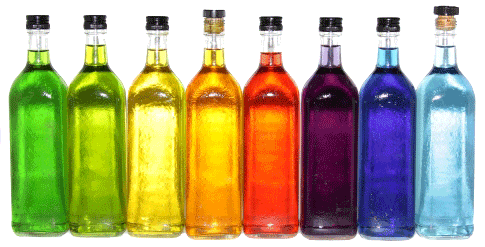 Solarized Water Solarized WaterWhen exposed to sunlight, water in a colored container absorbs the vibrational energy of that particular color. The water is then sipped, or used for bathing a specific part of the body. Light Box A light box can be used which contains filters of different colors and intensities. Like the sun, a light box can emulate full spectrum light. They are available from stores and online, and come in different shapes and sizes. |
Ayurveda recognizes that without proper exposure to sunlight, many forms of life on earth would cease to exist. Reduced sunlight can also cause disorders such as Seasonal Affective Disorder (SAD).
Season Affective Disorder (SAD)
SAD is a condition experienced by some people during the winter time when light levels are low, or in northern countries. Sunlight produces hormones and neurotransmitters that affect our mood and well-being. Serotonin is one of these hormones, which, at low levels, has been linked to depression. Studies have shown that bright light significantly increases serotonin levels, while dark or cloudy days caused serotonin levels to fall. Doctors recommend a minimum of 30 minutes of sunlight exposure each day. Sunshine also helps the body synthesize vitamin D, which is crucial to the body.
Vitamin D & why you need it...
Light boxes are used to apply full spectrum light, and have proven to be very effective in SAD, and to also treat depression.(1) Individuals often respond to light therapy much quicker than to medication. In a review of SAD therapy, the Archives of General Psychiatry in October, 1998 reported that “light therapy is easy to administer in outpatient settings, lacks any major side effect, and importantly, is cost-effective.”
Aromatherapy
I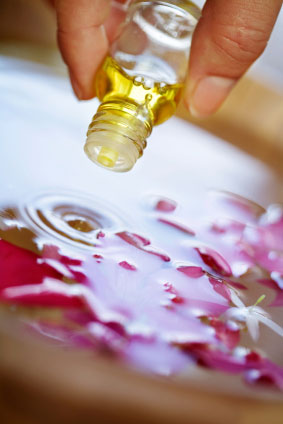 n Ayurveda, essential oils with various aromas and colors are used to stabilize and correct imbalances of the doshas and 7 primary energy centers (chakras) within the body.
n Ayurveda, essential oils with various aromas and colors are used to stabilize and correct imbalances of the doshas and 7 primary energy centers (chakras) within the body.
Essential oils are highly concentrated, volatile essences of aromatic plants that are extracted from different parts of the plant including the flowers, leaves, seeds, nuts, bark, root, and fruits.
The purity of the aroma is important for the desired effect, and synthetic aromas will not provide the same benefits, nor will those treated with pesticides. Essential oils can be purchased undiluted at maximum strength, or may be diluted in a base (also known as "carrier oil") such as sesame or almond oil.
Essential oils should never be taken internally!
Popular methods of using essential oils for Ayurvedic aromatherapy include:
Scent
The inhalation of aromas stimulates receptors that trigger electrical impulses within the body. Only a few drops are needed to achieve the desired effect. These impulses serve to penetrate the memory associated with the pattern of energy that created the imbalance, and then breaks the pattern.
Natural air fresheners using essential oils...
Bathing
Applying essential oils to hot baths is another simple, effective, and relaxing method of using Ayurvedic aromatherapy. The oils are absorbed by the skin, and as they vaporize in the hot water, they are inhaled. The sense of relaxation experienced during bathing also works to increase the effect of the aromas. Therapeutic bath salts may also be combined with oils.
Massage
When applied directly to the skin during massage, essential oils are not only inhaled, but are also absorbed into the skin and transported through the various systems of the body. Essential oils used for massage are sold as diluted in a base oil, as applying the pure oil directly on skin can cause irritation. As essential oils vary in the length of time it takes for absorption into the skin, it is recommended to not bathe or shower directly after application to give the oils enough time to become fully absorbed.
Hair & Skin Care
Shampoos, conditioners, soaps, lotions, and creams containing essential oils can be used as part of a daily treatment regimen.
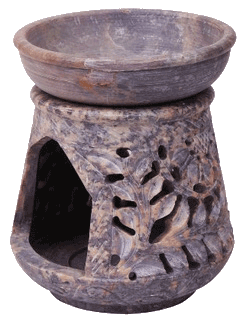 Ayurvedic practitioners may also recommend other forms of Ayurvedic aromatherapy, include burning incense sticks (especially during meditation), using aromatic air diffusers, and burning scented candles.
Ayurvedic practitioners may also recommend other forms of Ayurvedic aromatherapy, include burning incense sticks (especially during meditation), using aromatic air diffusers, and burning scented candles.
As certain oils may irritate the skin when applied directly, dab a tiny amount on a small area of skin to test for any negative reaction. Essential oils are sold in dark colored glass bottles to protect them from light. They should also be protected from heat until ready to use.
Ayurvedic Herbs
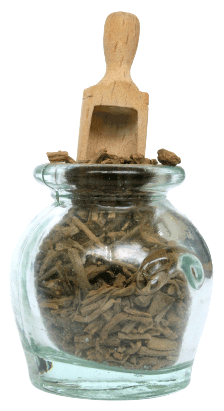 In Ayurveda, herbs and spices are viewed as Nature’s pharmacy. Many are used in teas and cooked with food, which makes it very easy to incorporate them into the daily diet. They can also be mixed with milk, water, honey, or ghee (clarified butter).
In Ayurveda, herbs and spices are viewed as Nature’s pharmacy. Many are used in teas and cooked with food, which makes it very easy to incorporate them into the daily diet. They can also be mixed with milk, water, honey, or ghee (clarified butter).
Herbs and spices are used to re-balance the doshas, to energize, rejuvenate, strengthen the immune system, and treat specific physical issues. Medicinal herbs are usually stronger and are used for shorter periods of time. Many herbs used in Ayurvedic medicine often have antioxidant effects, which means that they may help protect against the damage from free radicals.
Ayurvedic herbal preparations can consist of a single herb, or a compound of two or more. An estimated 1,250 plants are used and combined into over 5,000 compounds, each of which are categorized by their healing effect (e.g. antioxidants, anti-aging, pain relief, immune support, and kidney support, etc.).
Ayurvedic herbs can be purchased from Indian markets, bulk herb companies, supplement stores, or online. When buying the bulk herb, gelatin capsules can also be purchased to make your own herbal capsules.
The 10 of the most commonly used compounds:
| Sitopaladi | Chyavan Prash |
| Triphala | Avipattikar Churna |
| Yograj Guggul | Mahasudarshan |
| Trikatu | Dashmoola |
| Hingwastika Churna | Lavan Bhashkar Churna |
The 80 most commonly used herbs:
| Akarkara | Eranda | Nirgundi |
| Adrak | Gauriphal | Pashana Bheda |
| Amalaki | Gokshura | Pippali |
| Amlavetasa | Gudmar | Praval |
| Apamarga | Guduchi | Punarnava |
| Arjuna | Guggul | Rasonam |
| Ashoka | Haridra | Rechanaka |
| Ashwagandha | Haritaki | Salam-Mishri |
| Baboolphali | Ishabgol | Sariva |
| Bakuchi | Jatamanshi | Shankh |
| Bhringaraj | Kakamachi | Shatavari |
| Bala | Kakanasha | Shilajit |
| Bhutrina | Kanchanar | Shwetamusali |
| Bhuamalaki | Kantkari | Tagara |
| Bibhitaki | Kapikachhu | Tejbal |
| Bilwa | Katuka | Tila |
| Bola | Kumari | Trayman |
| Brahmi | Kumkun | Tulsi |
| Chandra Marada | Kusha | Twak |
| Chandanam | Kushtha | Vacha |
| Chirayata | Laghu Patha | Vamsha Lochana |
| Chitrak | Mamira | Varahikand |
| Daruharidra | Manjishtha | Vasaka |
| Devadaru | Maricha | Vidanga |
| Dhanyak | Musta | Vidari Kanda |
| Dhataki | Nagkeshar | Yashtimandhu |
| Ela | Nimba |
Herbs are often prepared while chanting an appropriate mantra to empower the properties of the herbs. Chanting the mantra 108 times is considered the most empowering, as 108 is considered a sacred number (see "mantras" above).
Purity & Safety Issues
Ayurvedic herbs should be administered by an Ayurvedic practitioner trained in Ayurvedic herbalism. This is especially important because of interactions between the herbs and conventional drugs, some of which can be dangerous. Similar to western herbs, these herbs can also have serious side effects, or be unsafe for people with certain medical conditions, and during pregnancy. A lack of long-term research studies exist on the safety, side effects, and potential drug interactions of Ayurvedic herbal products. While herbs in smaller amounts may cause a therapeutic action on the body, higher doses of many herbs can lead to symptoms associated with toxicity.
Ayurvedic herbal preparations sold in the US have been found to contain, mercury, lead, and arsenic, which can cause symptoms including nausea, vomiting, and abdominal pain.
- In 2004, 14 out of 70 Ayurvedic herbal remedies tested from Boston, MA were found to contain lead, mercury, and/or arsenic at potentially harmful levels. All products were manufactured in South Asia.(2)
- In the same year, the Centers for Disease Control and Prevention (CDC) received 12 reports of lead poisoning linked to the use of Ayurvedic herbal products.
-
In another study conducted in 2008, 193 of 230 requested herbs via the internet were received and analyzed. The prevalence of metals in products manufactured in the US was 21.7%, compared with 19.5% in Indian products. Among the metal-containing products, 95% were sold by US websites, and 75% claimed Good Manufacturing Practices. All products containing metals exceeded 1 or more standards for acceptable daily intake of toxic metals. This means that 1/5 of of all Ayurvedic medicines purchased via the Internet contain detectable levels of lead, mercury, or arsenic.(3)
It is important to only use herbs from a reputable manufacturer whose products been independently verified as being free of these toxins. Ayurvedic doctors typically choose brands and products from manufacturers who are well-respected, and whose products carry a 3rd party verification stamp.
Massage
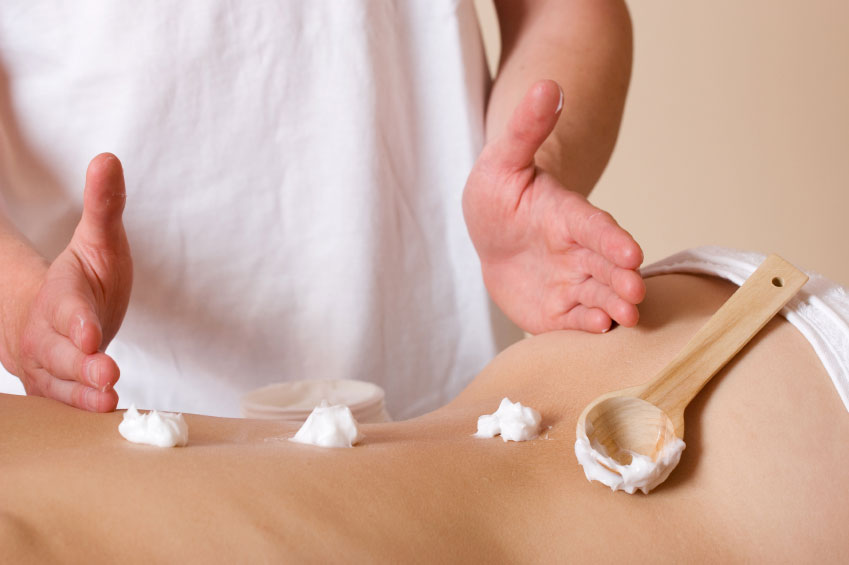 In Ayurveda, the various massage techniques are also known as "abhyanga" (pouring oil on the body), as they involve applying oil to stimulate different parts of the body. The effect of touch in Ayurveda is considered a powerful and positive influence, and the simple act of holding a hand can have a profound effect.
In Ayurveda, the various massage techniques are also known as "abhyanga" (pouring oil on the body), as they involve applying oil to stimulate different parts of the body. The effect of touch in Ayurveda is considered a powerful and positive influence, and the simple act of holding a hand can have a profound effect.
We say something is “touching” because it tugs our heartstrings and causes us to respond emotionally. Our emotions are intimately connected to the sense of touch that we receive from others. We sense touch through the skin, which is the largest organ of the body, and which is filled with blood vessels and nerve endings. Through the skin, massage stimulates the entire nervous system.
Depending on the imbalance, different Ayurvedic massage techniques are used ranging from rejuvenation to the elimination of toxins, muscle trauma, arthritis, and to sharpen mental focus. Specific massage techniques have been developed and are used depending on the treatment required. The Ashtanga Hrudaya recommends abhyanga not only be given to treat disease, but also as a preventative measure.
Marma Point Massage (Indian Reflexology)
Vital body parts are known as “marmas” (a Sanskrit word meaning “hidden”) in Ayurvedic medicine. A marma point is a juncture on the body where two or more types of tissue meet, such as muscles, veins, ligaments, bones, or joints. Marma points are much more than a casual connection of tissue and fluids; they are also intersections where congestion can occur of the vital life force in the body.
The marmas are located throughout the body, and are classified into 108 points (the Ayurvedic equivalent of acupuncture points in Oriental medicine). Through massage, these various points are stimulated and activated, which then have a corresponding effect on each of the doshas. Marma treatments are often practiced by instructors of Indian martial arts.
The marma points range in size from 1 to 6 inches in diameter. The points were mapped out in detail centuries ago in classic Ayurvedic texts by Sushruta Samhita (6th Century BC), considered a founding father of Ayurvedic medicine. Major marma points correspond to the 7 chakras of the body, while minor points radiate out along the torso and limbs. Specific points are also associated with each dosha.
The points cover both the front and the back of the body and lymph nodes, including:
- 22 on the legs
- 22 on the arms
- 12 on the chest and stomach
- 14 on the back
- 37 on the head and neck
- The mind is considered the 108th marma
Marma points are relatively easy to find. They are located and measured by using the widths of the finger from various body parts.
During the aging process, factors such as stress and anxiety, poor diet, or erratic habits cause disharmony among the doshas. Doshic imbalances begin to block the movement of vital energy in the body, and eventually, this stagnation leads to physical and mental discomfort and disease. Marma point massage releases blocked energy by either stimulating or calming the doshas. Like a television with three channels, each marma point has three receptors that align with the three doshas.
During a marma point massage, the points are stroked in a light yet deliberate sequence, using specific essential oils. Different techniques are used depending on whether the points are being stimulated or calmed. Similar to acupressure, one or more fingers are used to apply subtle pressure and stimulate each marma point. The number of fingers used depends on the size of the point.
Sessions can last an hour or longer, with either all marma points treated, or specific points treated depending on the imbalance. The experience is deeply relaxing.
Massage & Oil Techniques
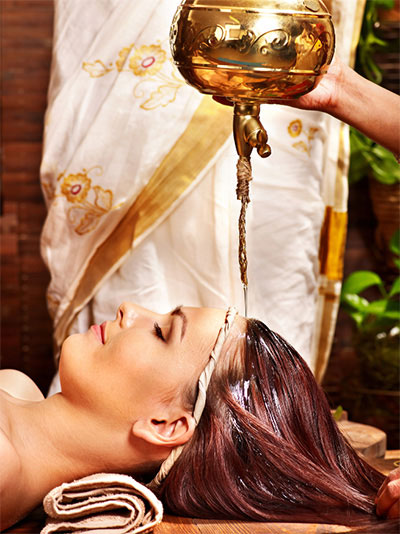 Techniques such as tapping, rubbing, squeezing, and kneading can be used. A light touch is applied, which becomes increasingly firm over a span of 1-3 minutes per point. Pressure can be direct, or be applied in a circular motion. Clockwise motion stimulates and energizes, whereas counterclockwise motion calms or sedates. Stimulation in this manner also stimulates the flow of lymph throughout the body.
Techniques such as tapping, rubbing, squeezing, and kneading can be used. A light touch is applied, which becomes increasingly firm over a span of 1-3 minutes per point. Pressure can be direct, or be applied in a circular motion. Clockwise motion stimulates and energizes, whereas counterclockwise motion calms or sedates. Stimulation in this manner also stimulates the flow of lymph throughout the body.
Medicinal/herbal oils can be applied using several different methods. These are used to increase blood circulation, draw toxins out of the body through the skin, and for disorders such as arthritis, muscles spasms, degenerative diseases, skin diseases, high cholesterol, high blood pressure, relaxation, stress, insomnia, paralysis, headaches, and cataracts. The doshas determine which herbs are appropriate.
There are many methods of applying the oils. Here are some of the most popular:
Sirodhara
Warm oil is poured directly onto the center of the forehead in a continuous stream for a specific period of time. Medicated milk or buttermilk may also be used to replace the oil.
Pizhichil & Sarvangadhara
With pizhichil, warm, medicated/herbal oils are applied to the entire body with a piece of cloth that is dipped into the oil and squeezed onto the skin (pizhichil means “squeezing”). Ghee (clarified butter) may also be used instead of oil. Sarvangadhara uses a larger quantity of oil that is poured over the body from pitchers. The oil is simultaneously rubbed into the body.
Njavarakizhi
Njavarakizhi is a technique used which causes the entire body to perspire. Rice is cooked in milk and infused with medicinal oils, and the resulting "pudding" poured into a bundle (usually a muslin/linen bag). The entire body or specific parts of the body then perspire using these bundles.
Shirovasthi
Oils are poured into a cap that is then placed on the head. The oils seep through the cap and soak into the head. The length of time the cap is kept in place varies on the condition being treated, which may be up to an hour for severe conditions.
It's recommended to wait at least 1 hour after abhyanga before taking a bath to allow the oils to fully penetrate and nourish the body.
Additional Therapies
In addition to the treatments listed above, meditation, yoga/exercise, and breathing techniques are often also incorporated into a treatment program.
Yoga & Yoga Therapy...
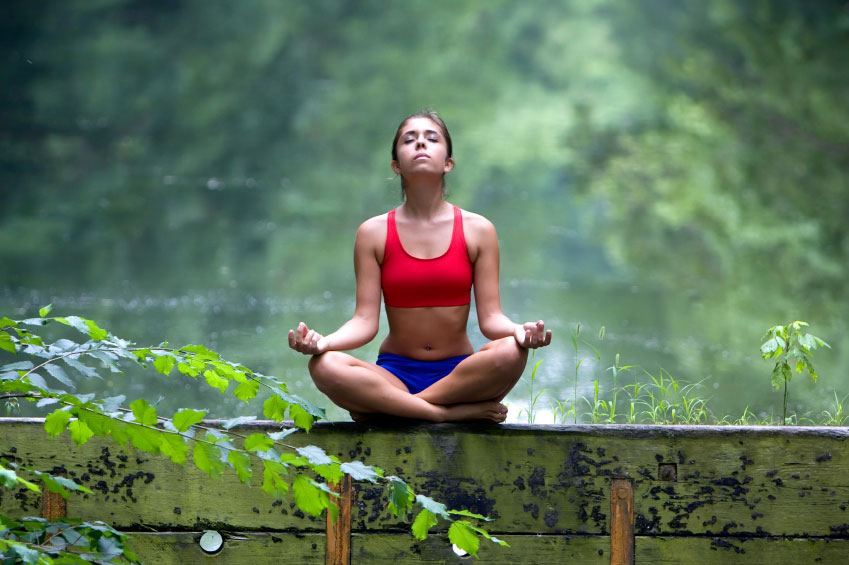 The word yoga comes from the Sanskrit word “yuj” meaning "union" or "to merge." It is based on the Indian philosophy of achieving a balance of the mind, body, and spirit with the goal of enlightenment.
The word yoga comes from the Sanskrit word “yuj” meaning "union" or "to merge." It is based on the Indian philosophy of achieving a balance of the mind, body, and spirit with the goal of enlightenment.
Ayurvedic yoga is the application of Ayurvedic principles to the practice of yoga. It teaches how to keep the physical body healthy, and how this health relates to our spiritual journey. Both yoga and Ayurveda originated from the Vedas, the 4 ancient Hindu scriptures documented in archaic Sanskrit.
Ayurvedic doctors will recommend a personalized yoga and meditation regimen based on the constitution of the doshas. Since different styles of yoga impact the body differently, various styles and poses of yoga benefit particular doshas. Specific poses may be recommended and correct postures are taught to help prevent injuries than can further imbalances the doshas.
Yoga poses are often classified according to the dosha they stimulate. Different poses will have different effects on the body, for example, the kapha dosha is regulated by the chest and stomach, therefore poses which stimulate this area will also stimulate the kapha dosha. Ayurvedic practitioners may also recommend changes to a yogic practice according to the season, which can help the doshas to energetically and biologically adjust to the changes of each season.
Hatha Yoga
Hatha Yoga is the branch of Yoga most commonly practiced worldwide today. It is best known as a set of physical poses that include gentle stretches, breathing practices, and progressively deep relaxation. Hatha yoga aims to balance the entire being through the practice of these poses.
Each yoga pose is referred to as an “asana” with some styles of yoga performing these asanas in a flowing sequence called a “vinyasa” flow.
Other Popular Yoga Styles
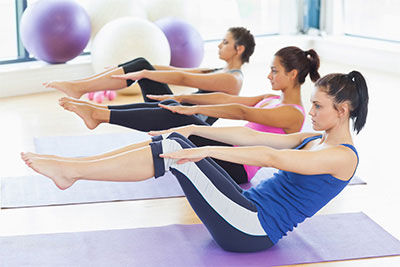 Many of us practice yoga as part of our fitness regimen to increase flexibility and strength, and this led to the popularization of many other styles of yoga, some of which are more aerobic in nature such as power yoga (power vinyasa flow or ashtanga).
Many of us practice yoga as part of our fitness regimen to increase flexibility and strength, and this led to the popularization of many other styles of yoga, some of which are more aerobic in nature such as power yoga (power vinyasa flow or ashtanga).
Some yoga styles place emphasis on the strict alignment of the body, while others focus on the coordination of breath with movement. Some are physically challenging, while others are meditative and calming. Some are distinguished based on name of the Yogi who developed it, with this designation usually reserved for very advanced practitioners who originated that particular style.
Following are the main 12 styles of yoga practice today:
- Ananda
Ananda yoga is a gentle style of yoga developed by Swami Kriyananda, a direct disciple of Paramahansa Yogananda, and author of the spiritual classic, Autobiography of a Yogi.
Ananda is a classical style of yoga which incorporates the use of the asanas (poses) and pranayama (breathing) to awaken, experience, and begin to control the subtle energies within the body. The goal is to use these energies to harmonize the body, and above all, to attune with higher levels of awareness. Silent affirmations are also used. - Anasura Yoga
Anasura yoga was founded in 1997 by John Friend. It is a form of hatha yoga which unifies the philosophy of intrinsic goodness with the principles of enlightenment, and celebrates the good in all life. - Vinyasa Flow / Power Vinyasa Flow
Although "vinyasa" is sometimes referred to as a style of yoga, it is also a method which is incorporated within other styles of yoga. The word vinyasa means “breath-synchronized movement.” Asanas are practiced in a flowing sequence on either an inhalation or an exhalation of the breath.
A sequence of asanas flow quite similarly to dance movements, with a small pause between each one. Two popular asana sequences practiced in a vinyasa flow are "sun salutation A" and "sun salutation B," (a flowing series of 12 poses which help improve strength and flexibility of the muscles and spinal column).
Power vinyasa is a more challenging and physically demanding form of vinyasa flow, and is more aerobic in nature. It also incorporates ujjayi breathing (see "pranayama" below). The sequence of poses vary with each class and based on the instructor. - Ashtanga Yoga (Power Yoga)
Developed by K. Pattabhi Jois, ashtanga yoga is a physically demanding style of yoga similar to power vinyasa flow which builds strength, flexibility, and stamina. The asanas are quickly transitioned from one to the next in 6 increasingly difficult flows. Unlike power vinyasa, ashtanga poses are always practiced in the same sequence. Ujjayi breathing is also incorporated. - Bikram Yoga
Named after it's founder, Bikram Choudhury, bikram yoga is practiced in a room with a temperature of up to 105°F (40.6°C). A series of 26 asanas are performed, with each posture held for a certain period of time, and performed twice. The asanas are accompanied by the "breath of fire" (see "pranayama" below). - Integral
Developed by Swami Satchidananda, integral yoga places equal emphasis on the asanas, pranayama, and on meditation. It revolves around 8 goals: 1) physical health and strength, 2) control over all senses, 3) a clear, calm, and well-disciplined mind, 4) higher levels of intellect, 5) strong and pliable will, 6) love and compassion, 7) purer ego, and 8) ultimate peace and joy. - Iyengar
Named after its founder, B. K. S. Iyengar, Iyengar yoga is one of the most popular styles of yoga in the world. Great attention is paid to the precise alignment of the asanas, which are held for a longer period of time than other styles. They are also repeated several times. Once the asanas have been mastered, pranayama is then incorporated. - Kripalu Yoga
Also known as the Yoga of Consciousness, kripalu yoga places emphasis on proper breathing techniques, alignment, coordination of the breath with the movement, and honoring the wisdom of the body. Students focus on the physical and psychological reactions caused by the various postures to help develop a deeper awareness of their mind, body, and spirit.
There are three stages in kripalu yoga:
1) Learning postures, proper breathing techniques, and learning the body's abilities.
2) Holding postures for an extended period of time, developing an awareness of thoughts and emotions.
3) Performing asanas unconsciously and spontaneously, known as "meditation in motion." - Kundalini Yoga
Kundalini yoga was popularized by Yogi Bhajan in 1969 and focuses on the controlled release of energy up the base of the spine, known as the "rising of the kundalini" (serpent). The aim of kundalini yoga is a spiritual transformation and unity consciousness. Classic asanas are coordinated with pranayama, movement, and mantras, however the main emphasis is placed on the pranayama and mantras. - Sivananda Yoga
Sivananda yoga is named after its founder, Swami Sivananda Saraswati. Practice is based on 12 basic yoga asanas which are practiced to increase flexibility and strength, and incorporated with correct breathing techniques and meditation. The Sivananda yoga centers are considered one of the largest yoga institutions in the world. - Tantric Yoga
Tantric yoga is an approach to understanding the whole (the macrocosm) through the study and understanding of the self (the microcosm). It involves expanding physical awareness into all levels of consciousness to achieve unity with oneness. The goal is to harmonize the concept of opposites and duality within each of us (referred to as male/female in tantric texts). Tantric yoga also channels the creative force within to transmute limitations and fear-based emotions.
Tantric yoga offers practical tools for reprogramming physical desires to overcome being a slave to our instincts. These tools include pranayama, contemplation, visualization, mantra repetition, and physical/ritual cleansing. The teachings are based on ancient doctrines. Tantra as related to sexual practices is considered a "new age" offshoot which has been interpreted very loosely and ambiguously from the original tantric doctrines. - Viniyoga
Also known as "yoga for wellnes," viniyoga is based on the principles developed by Sri. T. Krishnamacharya. Modified asanas are practiced which meet the specific needs of an individual to promote flexibility, healing, and to strengthen joints. Main emphasis is placed on coordinating movement and pranayama.
Krishnamacharya is the teacher of well-known yogi masters, including K. Pattabhi Jois (ashtanga yoga) and B.K.S. Iyengar (iyengar yoga).
Namaste
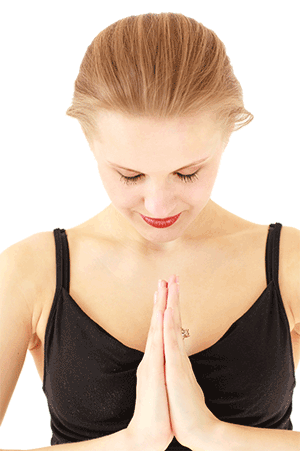 Often in yoga, a gesture called "Namaste" is performed where both palms of the hand are brought together before the heart, as within prayer, with the head lightly bowed.
Often in yoga, a gesture called "Namaste" is performed where both palms of the hand are brought together before the heart, as within prayer, with the head lightly bowed.
The gesture of Namaste represents the belief that the divinity is within each of us and recognizes the equality of all. The essence of the word conveys "The God within me salutes the God within you." It is an acknowledgment of the soul in one person by the soul in another. After a yoga class, the teacher will often close with the word Namaste, and the students will respond likewise, each acknowledging and giving thanks to the other for the experience together.
Namaste can also be performed by placing the hands together in front of the third eye (between the eyes), bowing the head, and then bringing the hands down to the heart. This is considered an especially deep form of respect.
Breathing (Pranayama)...
In Sanskrit, the term "pranayama" is translated to mean "mastery of the breath/vital energy." But this does not only refer to the life-giving oxygen in the air, but also refers to the essence of energy that gives life. It refers to something subtle - to the primal essence of life force.
The first and last act of physical life is to breathe. In Ayurveda, absorbing as much prana as possible from breathing, food, and our surroundings is considered of vital importance. The practice of breath control and simple breathing techniques is used to absorb a much greater amount of prana than what is received during mainstream, shallow breathing. Deep and mindful breathing more fully oxygenates the body and rids the body of waste products and toxins. These breathing techniques are known in Sanskrit as “pranayama."
Different Breathing Techniques
Ayurveda encourages deep breathing with a straight spine, using a fluid and natural rhythm during the course of the day - if possible, in an environment of fresh, clean air.
Breathing is done through the nostrils only, therefore it is important to keep the nasal passages as clear as possible. The nose has various defense mechanisms that prevent dust particles, insects, and impurities from entering the body. It also warms excessively cold air. It is also believed that the olfactory organ is more effective at absorbing prana from the air than the mouth.
Before beginning formal breathing exercises, wait at least 1 hour after eating so that the body is not focused on the digestion process.
Let's take a look at the three common methods of breathing, and the we we most often use in daily life:
- High Breathing (shallow breathing)
High breathing involves using the upper chest and lungs only. It is considered the least desirable form of breathing, as only the upper region of the lungs is used which has a small air capacity. This results in lower amounts of oxygen being absorbed in the body, which in turn, leads to a host of problems such as the build-up of toxins, reduced mental clarity, and premature aging. High, quick breathing is the most common type of breathing used in everyday life due to tight fitting clothes, posture, intense concentration, stress and anxiety, anger, and other intense emotions. Stress and anger causes us to breathe very shallowly. - Low Breathing
Also called “abdominal breathing,” low breathing involves using the abdomen. With each inhalation, the stomach is gently pushed out, and with each exhalation, it returns to its normal position. Low breathing is considered far superior to high breathing as a much larger amount of air is breathed in due to the increased surface area and capacity of the lungs. The abdominal organs are also massaged by the diaphragm as is rises and falls, and overall circulation is improved. - Middle Breathing
Middle breathing, also called “thoracic breathing” as the ribs and chest are expanded sideways, is not quite as shallow as high breathing, yet not as deep as low breathing.
Although there are many breathing exercises used in the practice of pranayama, the “Complete Breath” is often recommended, in addition to the practice of simply breathing more deeply throughout the day. It is practiced twice daily.
The Complete Breath
The complete breath is a combination of high, middle, and low breathing. It is the deepest form of breathing possible, involving the entire respiratory system and expansion of the lungs to their fullest capacity. Sit in a comfortably seated position, or stand with an erect spine. With each inhalation, the belly is slowly expanded as air is drawn in deeply. The mid chest is then expanded, followed by the upper chest, as the intake of breath continues. At the height of the exhalation, a pause is held for several seconds. With each exhale, the abdomen is drawn in and lifted as the breath begins to expel. After the breath is expelled from the abdomen, the chest then deflates to expel the remaining air in the mid and upper chest. Both the inhalation and exhalation can be done to a specific count of seconds. The number of seconds are increased as the lung capacity increases. This type of breathing is only done during breathing exercises as it can cause dizziness or light-headedness. |
Other popular breathing techniques include:
Ujjayi Kumbhaka (Conquering Breath)
While inhaling slowly and deeply through the nose, the back of the throat is constricted which creates a sound similar to Darth Vader's breathing. A pause is held at the height of the inhalation. Exhalation is performed in the same manner. A variation of ujjayi breathing includes breathing in through one nostril and out through the other, or breathing in through both nostrils and out through the left nostril. Ujjayi breathing is commonly used in several types of yoga, including vinyasa flow and ashtanga.
Suryabheda Pranayama (Solar Breathing)
While sitting with the spine erect, the right thumb is placed on the right nostril, the index and middle fingers rest on the third eye, and the ring finger is placed on the left nostril. The left nostril is closed, while the air is slowly inhaled through the right nostril into an expanded abdomen. The right nostril is then closed while the breath is slowly exhaled. The process is then repeated.
Chandrabheda Pranayama (Lunar Breathing)
Lunar breathing is performed by reversing the process of solar breathing, which means that the breath is inhaled through the left nostril and exhaled through the right nostril.
Breath of Fire
A deep breath is taken in through the nose, filling the abdomen. During the exhalation, the abdomen is pulled back in and up towards the spine in a rapid pumping motion. The shoulder and chest areas remain unmoved throughout each breath - only the abdomen moves. Air is repeatedly pulled in and exhaled in this rapid pumping motion, with no break between the inhalation and exhalation (the sound is just like the rapid pumping of a bellows). This form of breathing is commonly used in kundalini yoga.
Meditation...
Meditation is a cornerstone practice in Ayurveda. Published studies by the American Heart Association show that meditation significantly reduces high blood pressure, a risk factor in strokes and heart disease. With practice, meditation quietens the mind and brings a sense of peace and clarity, and a deeper connection to all that surrounds us. It does not, however, require adopting a different faith or specific religious belief.
Many people who practice meditation experience benefits within days, including a sense of calmness, confidence, and increased alertness. Some experience profound shifts of consciousness with continued and deeper practice.
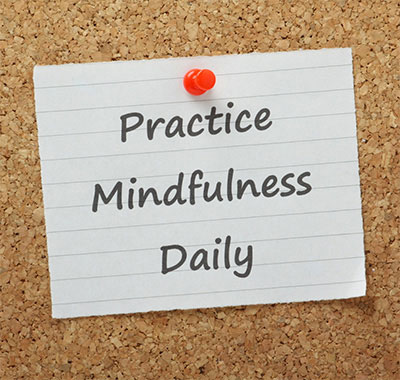
There are many studies and scientific research conducted to document the benefits of meditation practiced regularly, including a reduction in all sorts of health issues. It is especially beneficial in relieving all forms of stress, such as worry, anxiety, and tension.
There are many different methods of meditation that have been published, but common to many is steady, rhythmic breathing with focus on a word or an object (such as a candle), or on a visualization. Meditation can also include the repetition of a mantra provided to you that resonates with your dominant dosha.
Simply & Easy Meditation
Before beginning meditation, make sure that you are in a comfortable position that can be held for 15 minutes or longer. This can include sitting in a chair, or lying down on a bed (be careful you don’t fall asleep if you're lying down!). A traditional meditation posture used is to sit cross-legged on the floor where a cushion is placed beneath the seat bones.
Eyes can be closed, or alternately, you can use the flame of a candle in a dimly lit or dark room, focusing your gaze on the candle flame.
- With each inhalation and exhalation, begin to slow your breath, increasing the length of each inhalation and exhalation.
- Quiet your mind and begin to release all thoughts and distractions, bringing your awareness into the present moment. As each thought enters your mind, simply acknowledge it, and let it go.
- Focus on the deep, rhythmic movement of your breath. As distraction arise, keep bringing your attention back to your breath.
- Aim to extend your meditation time to between 15 and 30 minutes.
At first, it can be difficult to quieten the mind of daily thoughts, worries, concerns, and fleeting memories. They just keep popping up, no matter how much we ignore them! But by simply accepting and acknowledging these thoughts and then releasing them, the mind will quickly become clear with time and practice. Moments of quiet will begin to increase with each meditation, and a deepened sense of peace and tranquility will not only become a permanent part of your meditation, but it will also begin to infuse your entire being throughout the rest of your day.
Guided meditations in a class environment are a wonderful introduction to learning different meditation techniques. Not only are they relaxing, but it's also a great way to connect with others who are on the same path as you are, looking to incorporate the important benefits meditation into their lives.
Transcendental Meditation
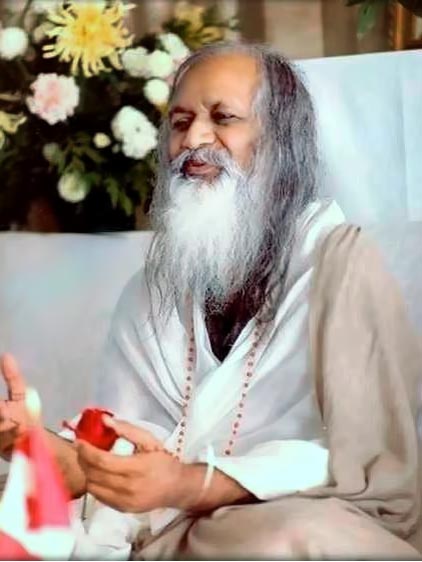
In TM, a simple technique is used to guide the mind into experiencing subtler and subtler states of thought, until the experience of absolute silence is experienced (also known as bliss consciousness, or the experience of a sense of oneness with all creation). Maharishi Mahesh Yogi states that the practice of TM will eventually allow the mind to experience and maintain the state of bliss consciousness at all times, no matter what the situation or how chaotic the activity being engaged in. This state of being gradually brings more and more of a sense of bliss consciousness into all aspects of life.
TM is practiced with the eyes closed for 20 minutes, twice a day. It is very easy to learn and there are many books on the subject that are easy to follow. Though it can also be beneficial to either attend a class or schedule a session with someone who can provide guidance, it is NOT at all necessary to pay large sums of money for classes or courses!
During TM, the mind and the body are quietened into a state of restful alertness. As the body becomes more relaxed, the mind becomes more still, more alert, and more silent, until the mind transcends all mental activity to experience the essence of creation – transcendental consciousness.
Pancha Karma (Cleansing & Detoxification)
Translating to the “5 actions” or “5 treatments,” pancha karma is a cleansing and detoxification therapy that uses 5 different treatments to release toxins from the body, and to restore the doshas to their state of balance. The primary focus is on the digestive tract and respiratory system.
Specific treatments are also used to cleanse the body of toxicity as a result of emotional stresses, and to reverse premature aging by revitalizing the tissues.
Pancha Karma (Cleansing & Detoxification)...
Pancha karma treatments are highly personalized. They are based on the needs of the individual and serve to eliminate any excess within the doshas.
- Vamana
Expels excess kapha dosha by using therapeutic vomiting to remove mucus and phlegm from the sinuses, lungs, chest, and stomach. Licorice or salt is usually drank, followed by rubbing the tongue to stimulate the gag reflex to cause vomiting. Without proper guidance, this therapy can be dangerous as it can cause damage to the nerve reflexes.
Physical symptoms of excess can include colds, asthma, bronchitis, coughs, diarrhea, diabetes, tumors, allergies, parasites, and skin conditions. - Nasya
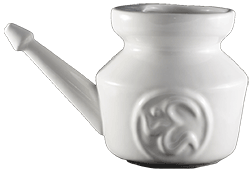 Expels excess kapha dosha by administering medicinal preparations through the nasal cavity to remove toxins from the sinuses, throat, and head. These preparations may involve snuffing dry powders into the nasal cavity, or lubricating the nasal cavity with clarified butter (ghee) or medicated oils. Some methods involve taking in the oils through the nose and expelling them through the mouth.
Expels excess kapha dosha by administering medicinal preparations through the nasal cavity to remove toxins from the sinuses, throat, and head. These preparations may involve snuffing dry powders into the nasal cavity, or lubricating the nasal cavity with clarified butter (ghee) or medicated oils. Some methods involve taking in the oils through the nose and expelling them through the mouth.
Physical symptoms of excess include sinus congestion, headaches, migraines, eye and ear problems, disorders of the neck and shoulders, and speech disorders. - Virechana
Expels excess pitta dosha by using therapeutic regurgitation and/or laxatives to remove excess bile from the gall bladder, liver, and small intestine. Herbs or herbal combinations are used to induce regurgitation.Physical symptoms of excess can include skin conditions (acne, eczema, rashes), fever, abdominal tumors, constipation, and jaundice.
- Basti
Expels excess vata dosha by using herbal enemas to remove toxins from the large intestine and colon. A healthy, functioning colon is very important for the proper assimilation of nutrients. Enemas may be oil-based (for toning) or non oil-based (for cleansing). For disorders of the reproductive system, these decoctions can also be given through the urethra (for men) or vagina (for women).
Physical symptoms of excess can include constipation, kidney stones, sciatica, joint pain (arthritis, rheumatism), muscular atrophy, and neurological/mental disorders. - Raktalmoksha
Expels excess pitta dosha by detoxifying the blood. This is often done by extracting small amounts of blood from veins in various areas of the body (bloodletting). Known as toxemia, toxins in the blood can cause repeated infections and various circulatory conditions.
Raktalmoksha is used for disorders of the skin, liver, spleen, and for hypertension.Bloodletting also stimulates the spleen to produce chemicals that in turn stimulate the immune system. When the blood is first released, it will typically be dark or purplish. When the therapy is complete, the blood should be bright red. The amount of blood released ranges from a prick to several ounces. Other forms of raktalmoksha include the use of herbal preparations and chromatherapy.
As Ayurveda recognizes the importance of not only the treatment and prevention of illnesses, but also of rejuvenation, pancha karma is also used as an anti-aging therapy.
Pancha karma will typically involve dietary changes, such as eating fresh and unprocessed foods, and other Ayurvedic treatments. Strenuous exercise, loud music, and any lifestyle excess are not recommended.
RELATED ARTICLES
- Oriental medicine (Acupuncture, Chinese Herbalism, Tui Na, QiGong)
- Ayurveda
- Homeopathy
- Bach Flower Remedies
View Sources & References
- (1) The Lancet, October, 1998
- (2) National Center for Complementary & Alternative Medicine (NCCAM)
- (3) Lead, mercury, & arsenic in US & Indian manufactured Ayurvedic medicines sold on the internet. JAMA. 2008;300(8):915-923.doi:l0.1001



